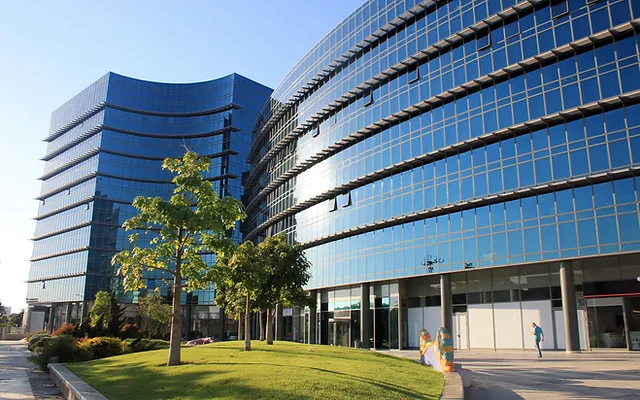Natural Capital Insurance Plans comprising ecosystems, biodiversity, and natural resources, sustains life on Earth and underpins economic activities worldwide. However, escalating environmental degradation and climate change pose significant risks to natural capital, endangering both ecosystems and economies. In response, the concept of natural capital insurance has emerged as a potential solution to mitigate these risks. This article delves into the intricacies of natural capital insurance plans, exploring their significance, mechanisms, benefits, challenges, and future prospects in safeguarding our environment and economy.
In recent years, the depletion of natural resources, loss of biodiversity, and adverse impacts of climate change have raised alarm bells globally. The decline in natural capital not only threatens ecosystems and biodiversity but also jeopardizes the stability of economies that rely on these resources for various services and products. Recognizing the interconnectedness between environmental health and economic prosperity, the concept of natural capital insurance has gained traction as a mechanism to protect and restore natural assets.
What are Natural Capital Insurance Plans?
Natural capital insurance plans are innovative financial instruments designed to protect against the risks associated with environmental degradation, biodiversity loss, and climate-related events. Similar to traditional insurance policies, natural capital insurance operates on the principle of risk transfer, wherein individuals, businesses, or governments pay premiums to insurance providers in exchange for coverage against potential losses resulting from environmental damage.
Mechanisms of Natural Capital Insurance
- Risk Assessment and Valuation: Natural capital insurance begins with the assessment and valuation of ecosystem services and biodiversity. This involves quantifying the economic value of natural assets based on their contributions to human well-being, such as water purification, carbon sequestration, pollination, and climate regulation.
- Premium Calculation: Insurance premiums are calculated based on the perceived risks associated with the degradation or loss of natural capital. Factors influencing premium rates include the vulnerability of ecosystems, the likelihood of environmental hazards, and the potential economic consequences of ecosystem degradation.
- Coverage and Compensation: In the event of environmental damage or loss of natural capital, policyholders are entitled to compensation from the insurance provider. Compensation may take various forms, including financial payouts, restoration efforts, or investments in ecosystem conservation and restoration projects.
- Risk Mitigation and Adaptation: Natural capital insurance plans may incorporate risk mitigation and adaptation measures to minimize the likelihood and severity of environmental losses. These measures could include ecosystem restoration, habitat conservation, sustainable land management practices, and climate-resilient infrastructure development.
Benefits of Natural Capital Insurance Plans
- Environmental Protection: By incentivizing the conservation and restoration of natural capital, insurance plans contribute to the preservation of ecosystems, biodiversity, and critical ecosystem services essential for human well-being.
- Economic Resilience: Natural capital insurance enhances economic resilience by providing financial protection against environmental risks, reducing the vulnerability of businesses, communities, and governments to the impacts of environmental degradation and climate change.
- Risk Transfer and Management: Natural capital insurance facilitates the transfer and management of environmental risks, allowing stakeholders to allocate resources more efficiently and hedge against potential losses associated with ecosystem damage or loss.
- Social Equity: Insurance coverage for natural capital benefits society by promoting social equity and ensuring that the costs of environmental damage are distributed fairly among stakeholders, thereby preventing the disproportionate burden on vulnerable communities.
- Innovation and Collaboration: The development of natural capital insurance fosters innovation and collaboration among insurers, policymakers, scientists, and conservation practitioners, leading to the emergence of new approaches and strategies for protecting and restoring natural assets.
Challenges and Limitations in Natural Capital Insurance Plans
- Data Uncertainty and Complexity: Assessing and valuing natural capital involves significant data uncertainty and complexity, making it challenging to accurately quantify the economic value of ecosystem services and biodiversity.
- Moral Hazard: The availability of insurance coverage for natural capital may create moral hazard by incentivizing risky behavior or inadequate environmental stewardship among policyholders, leading to further degradation of ecosystems.
- Market Barriers: The nascent nature of natural capital insurance markets, coupled with regulatory barriers and market failures, may hinder the widespread adoption and scalability of insurance solutions for environmental risk management.
- Interconnected Risks: Environmental risks are often interconnected and systemic, spanning multiple sectors, regions, and time scales, making it difficult to capture the full extent of risks and dependencies within existing insurance frameworks.
- Equity and Access: Ensuring equitable access to natural capital insurance, particularly for marginalized communities and developing countries, remains a challenge due to affordability constraints, limited awareness, and institutional barriers.
Future Directions and Opportunities on Natural Capital Insurance Plans
- Integrated Risk Management: Future natural capital insurance models should adopt an integrated approach to risk management, incorporating ecosystem-based adaptation, climate resilience, and sustainable development principles into insurance products and strategies.
- Technology and Innovation: Advances in technology, including remote sensing, artificial intelligence, blockchain, and parametric insurance mechanisms, hold promise for improving the accuracy, efficiency, and scalability of natural capital insurance solutions.
- Policy Support and Collaboration: Governments, international organizations, and the private sector should collaborate to create an enabling policy environment that incentivizes investment in natural capital insurance and promotes cross-sectoral cooperation for sustainable development.
- Capacity Building and Awareness: Capacity building efforts, coupled with public awareness campaigns and stakeholder engagement initiatives, are essential for increasing understanding of natural capital insurance, building trust, and fostering widespread adoption and implementation.
- Ecosystem-Based Solutions: Investing in ecosystem-based solutions, such as nature-based infrastructure, green finance, and biodiversity offsets, can complement natural capital insurance efforts and enhance the resilience of ecosystems and communities to environmental risks.






